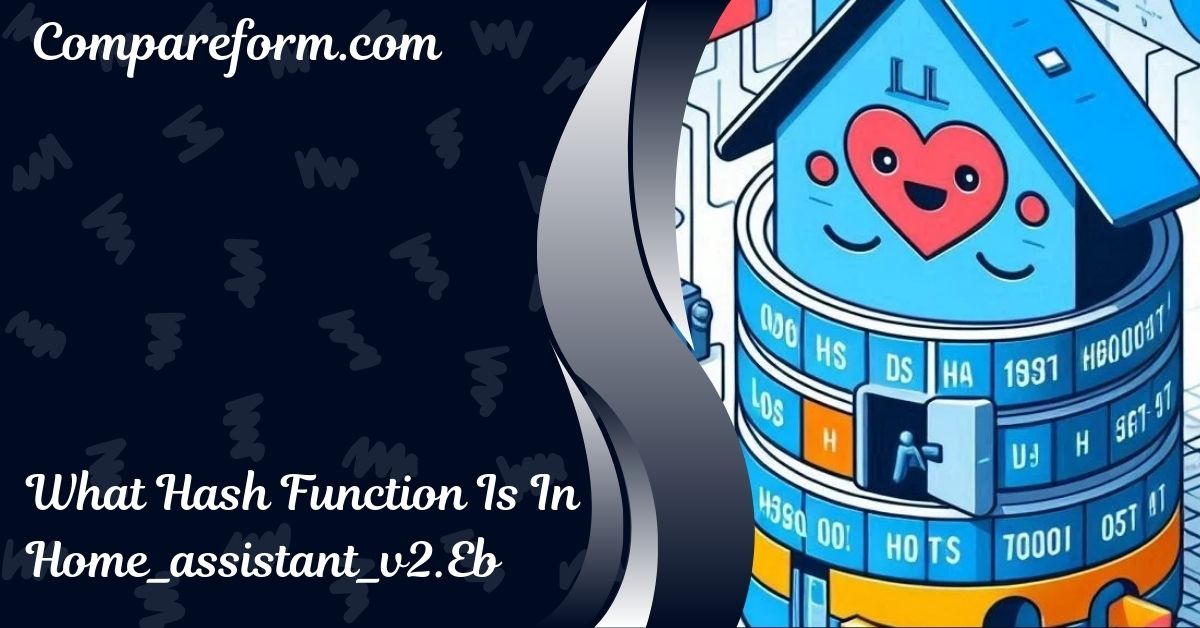Understanding What Hash Function Is In Home_assistant_v2.Eb
In the realm of technology and home automation, security and data integrity are paramount. One of the critical components that help achieve this within the Home Assistant platform is the hash function. In this article, we will explore what hash function is in home_assistant_v2.eb, its importance, how it operates, and much more.
Introduction to Home Assistant
What is Home Assistant?
Home Assistant is an open-source platform designed for home automation. It allows users to control various smart devices from different manufacturers within a single interface. With Home Assistant, you can automate your home environment, enhance energy efficiency, and improve security.
The Importance of Home Automation
Home automation is becoming increasingly popular, offering users convenience, security, and energy savings. With the growing number of smart devices, a unified system like Home Assistant helps manage everything efficiently. However, with convenience comes the need for robust security measures, making understanding what hash function is in home_assistant_v2.eb essential.
Overview of Home Assistant v2.eb
Home Assistant v2.eb is a specific version of the platform, which includes various features aimed at enhancing functionality and security. Among these features, hash functions play a crucial role in ensuring that data exchanged between devices remains secure and unchanged. Therefore, knowing what hash function is in home_assistant_v2.eb is vital for any user looking to secure their home automation setup.
Understanding Hash Functions
Definition of Hash Function
A hash function is a mathematical algorithm that transforms an input (or ‘message’) into a fixed-size string of bytes. The output is typically a ‘hash code’ or ‘hash value.’ This function is designed to be a one-way process, meaning that it is computationally infeasible to reverse the operation and retrieve the original input from the hash code. Understanding what hash function is in home_assistant_v2.eb requires grasping this fundamental concept.
Types of Hash Functions
There are various types of hash functions, each serving different purposes. Some common types include:
- Cryptographic Hash Functions: Designed for security purposes, these functions produce a unique hash for every unique input. Examples include SHA-256 and MD5, which are often referenced in discussions about what hash function is in home_assistant_v2.eb.
- Non-Cryptographic Hash Functions: Often used for data structures like hash tables, these functions focus on speed rather than security. Examples include MurmurHash and FNV, which may not be as relevant in the context of what hash function is in home_assistant_v2.eb.
Properties of Hash Functions
The effectiveness of a hash function is determined by several properties:
- Deterministic: The same input will always produce the same output.
- Fast Computation: It should be quick to compute the hash value for any given input.
- Pre-image Resistance: Given a hash value, it should be difficult to find the original input.
- Small Changes, Big Differences: Even a tiny change in the input should produce a significantly different hash.
- Collision Resistance: It should be hard to find two different inputs that produce the same hash value.
These properties are essential to understand when discussing what hash function is in home_assistant_v2.eb.
Common Hash Functions in Use Today
Some widely-used hash functions include:
- MD5: Fast but not secure, often used for checksums. While MD5 might come up when discussing what hash function is in home_assistant_v2.eb, it’s important to note that it’s generally not recommended for secure applications.
- SHA-1: More secure than MD5 but still vulnerable to attacks. It’s crucial to be aware of its limitations when examining what hash function is in home_assistant_v2.eb.
- SHA-256: Part of the SHA-2 family, widely considered secure and used in many applications, including cryptocurrencies and secure communications. SHA-256 is often the recommended hash function for Home Assistant and can be crucial to discussions about what hash function is in home_assistant_v2.eb.
The Role of Hash Functions in Home Assistant v2.eb
Why Hash Functions Matter in Home Automation
Hash functions are vital for maintaining the security and integrity of data within Home Assistant. They help ensure that commands sent between devices and the server have not been tampered with. In a smart home environment, where devices communicate frequently, using hash functions prevents unauthorized access and data manipulation. Understanding what hash function is in home_assistant_v2.eb can help users appreciate its importance in maintaining the system’s overall security.
Security and Data Integrity
When devices communicate, they exchange sensitive information. Hash functions help verify that this information remains unchanged during transmission. For instance, if a user sends a command to turn on a smart light, the hash function can ensure that the command hasn’t been altered by a malicious actor. This aspect of hash functions is crucial when discussing what hash function is in home_assistant_v2.eb.
Authentication and Authorization
In addition to ensuring data integrity, hash functions also play a role in user authentication. When a user logs in to Home Assistant, their password is hashed. The system then compares the stored hash with the hash of the entered password to verify the user’s identity. This method protects users’ passwords by storing only the hash value, making it difficult for hackers to retrieve the original password even if they gain access to the database. This is another essential part of what hash function is in home_assistant_v2.eb that users should understand.
How Hash Functions Work in Home Assistant
The Process of Hashing
The process of hashing involves the following steps:
- Input Data: The data (e.g., a password or command) is input into the hash function.
- Hashing Algorithm: The algorithm processes the input and generates a fixed-size hash value.
- Output Hash: The output hash is then used for various purposes, such as data verification or password storage.
Understanding this process is key to comprehending what hash function is in home_assistant_v2.eb.
Use Cases in Home Assistant v2.eb
Hash functions are employed in several critical areas within Home Assistant v2.eb:
- User Authentication: As mentioned earlier, user passwords are hashed to protect them during storage and transmission.
- Data Verification: When a device sends a status update, the hash of the message ensures it hasn’t been altered.
- Integration with Other Services: Many smart devices use hash functions for secure communication with external services, ensuring data privacy. This highlights yet another application of what hash function is in home_assistant_v2.eb.
Real-World Examples of Hash Functions in Action
To illustrate the importance of hash functions, consider a scenario where a user remotely activates their security system via Home Assistant. The command is hashed, and the hash value is sent to the security device. Upon receiving the command, the device generates a hash of the received command and compares it to the hash sent by Home Assistant. If the hashes match, the command is executed. If not, the command is disregarded, protecting the system from unauthorized actions. This practical example emphasizes what hash function is in home_assistant_v2.eb in everyday scenarios.
Best Practices for Using Hash Functions in Home Assistant
Choosing the Right Hash Function
When implementing hash functions, it’s crucial to select a secure algorithm. Currently, SHA-256 is considered a robust choice due to its strong security features. Avoid using outdated algorithms like MD5 or SHA-1, as they are vulnerable to various attacks. Knowing what hash function is in home_assistant_v2.eb involves being aware of the best options available for maintaining security.
Implementing Hash Functions Securely
To enhance security, consider the following practices:
- Use Salting: Salting adds random data to the input before hashing, making it more difficult for attackers to use precomputed hash tables (rainbow tables) to crack passwords.
- Regularly Update Hash Algorithms: As computational power increases, so do the methods for cracking hash functions. Regularly review and update the hash algorithms in use to maintain security. This is vital for anyone wanting to know what hash function is in home_assistant_v2.eb.
- Monitor for Vulnerabilities: Stay informed about vulnerabilities in hash functions and be ready to migrate to newer, more secure options if necessary.
Regular Updates and Maintenance
Home Assistant and its components should be kept up to date to ensure that you have the latest security features and bug fixes. Regular updates can help protect against newly discovered vulnerabilities, ensuring the continued safety of your smart home. Keeping abreast of updates is essential for anyone serious about what hash function is in home_assistant_v2.eb.
Frequently Asked Questions (FAQs)
What are the most commonly used hash functions in Home Assistant?
In Home Assistant, SHA-256 is commonly used for its balance of speed and security. Other algorithms might be used for specific applications, but SHA-256 is the standard for password hashing and data integrity. This ties directly into what hash function is in home_assistant_v2.eb.
How do hash functions contribute to security?
Hash functions contribute to security by ensuring data integrity, verifying user identities, and preventing unauthorized access to sensitive information. They make it difficult for attackers to retrieve original data even if they manage to access the hashes, which is a fundamental aspect of understanding what hash function is in home_assistant_v2.eb.
Can hash functions be compromised?
While hash functions are designed to be secure, they can be compromised if outdated algorithms are used or if the implementation is flawed. Using strong, modern hash functions and implementing best practices can significantly reduce this risk. Recognizing these vulnerabilities is essential when discussing what hash function is in home_assistant_v2.eb.
How can I implement hash functions in my Home Assistant setup?
To implement hash functions in your Home Assistant setup, ensure you use a secure hashing algorithm like SHA-256 for password storage and data verification. Follow best practices for salting and updating your hashing methods to maintain security. This practical approach addresses what hash function is in home_assistant_v2.eb effectively.
Conclusion
In conclusion, understanding what hash function is in home_assistant_v2.eb is essential for anyone interested in home automation and security. Hash functions are crucial in ensuring the integrity and security of data exchanged within the Home Assistant platform. By implementing secure hashing methods and following best practices, users can protect their smart homes from unauthorized access and data manipulation.






